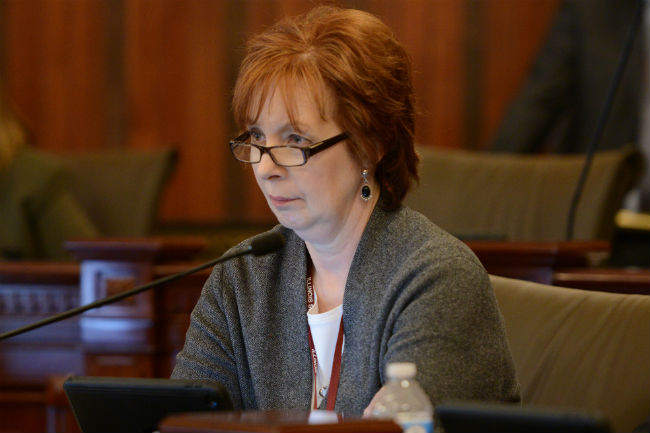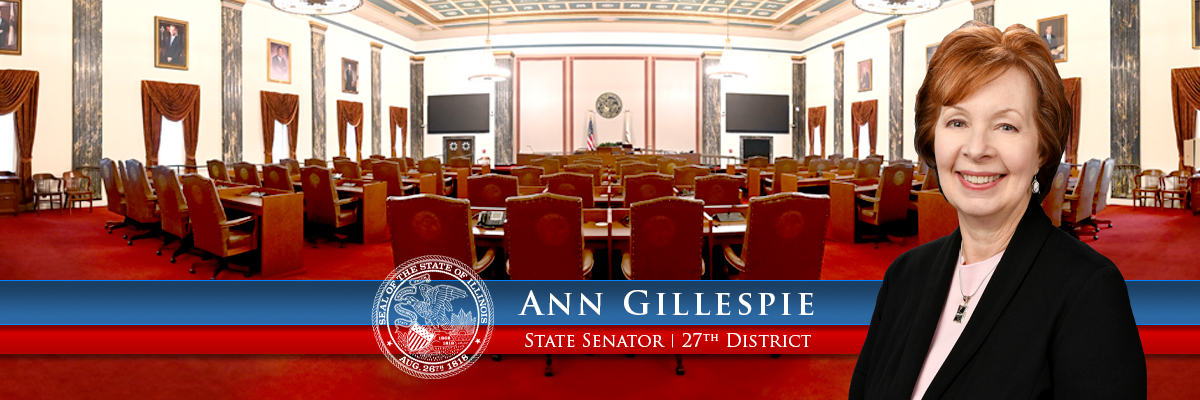
SPRINGFIELD – Low-wage workers in the northwest suburbs could better support themselves and their families under a minimum wage increase that’s making its way through the Illinois General Assembly.
If approved and signed by the governor, it would be the first minimum wage increase in Illinois in a decade.
“I believe Springfield should work for working families, and we can start by investing in people who work the hardest but earn the least,” said State Senator Ann Gillespie, an Arlington Heights Democrat and a longtime proponent of a $15 minimum wage. “A significant increase in the minimum wage is long overdue in Illinois, and I am pleased to support this effort on behalf of working people.”
Under the proposal, the state’s minimum hourly wage of $8.25 would increase incrementally to $15 per hour between now and 2025. The legislation, Senate Bill 1, also calls for including a small business tax credit to help businesses that employ fewer than 50 workers offset the wage increase.
There is ample public support for a minimum wage increase in Illinois. In 2014, voters were asked if they support an increase; 67 percent of them supported the non-binding question. Voter support was again overwhelming in 2018 for a similar referendum.
“I am proud to have represented the will of voters today by supporting this important bill,” said Gillespie, who is a co-sponsor of Senate Bill 1.
The Senate approved the measure today in a 39-18 vote. The House must take it up before the legislation can go to the governor’s desk for approval.
FAQs about Senate Bill 1, the $15 minimum wage proposal
Q: What is Illinois’ current minimum wage?
A: $8.25 per hour ($7.75 for teenagers/youth).
Q: When would the minimum wage increase to $15 per hour?
A: Under the plan, Illinois’ minimum wage would increase incrementally between now and 2025 on the following schedule:
- $9.25 per hour on Jan. 1, 2020
- $10 per hour on July 1, 2020
- $11 per hour on Jan. 1, 2021
- $12 per hour on Jan. 1, 2022
- $13 per hour on Jan. 1, 2023
- $14 per hour on Jan. 1, 2024
- $15 per hour on Jan. 1, 2025
Q: What is the federal minimum wage?
A: The current federal minimum wage is $7.25 per hour.
Q: How does Illinois’ current minimum wage compare to other states?
A: Currently, 27 states and Washington, D.C., have a higher minimum wage than Illinois. The highest of those are Washington, D.C., at $13.25 per hour, Massachusetts and Washington at $12 per hour, and Colorado and New York at $11.10 per hour.
Q: Does anyone know what the minimum wage should be today?
A: The historic minimum wage level is described as the equivalent of $1.60 per hour in 1968, adjusted for inflation. When considering the percentage change in the Consumer Price Index between 1968 and now, the minimum wage today should be $11.79.
Q: When was the last time Illinois raised the state minimum wage?
A: The last minimum wage increase in Illinois became law in 2006, when the wage increased from $6.50 per hour to $7.50 per hour, with an additional 25 cent increase during each of the next three years. That means the last time the minimum wage went up in Illinois was in 2009.
Q: Will raising the minimum wage really help workers support their families?
A: A full-time employee making minimum wage in Illinois today earns about $16,500 per year. The U.S. poverty line for a household of two is $16,910 per year. When the minimum wage reaches $15 per hour, a full-time employee would earn about $31,200 annually.
Q: What is the minimum wage for teenagers?
A: Currently, teenagers who are 16-17 can be paid up to 50 cents less than the state minimum wage. The current teen wage is $7.75 per hour. Under the pending proposal, the teen minimum wage for those who work fewer than 650 hours in a year would increase on the following schedule:
- $8 per hour on Jan. 1, 2020
- $8.50 per hour on Jan. 1, 2021
- $9.25 per hour on Jan. 1, 2022
- $10.50 per hour on Jan. 1, 2023
- $12 per hour on Jan. 1, 2024
- $13 per hour on Jan. 1, 2025


